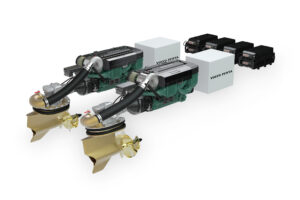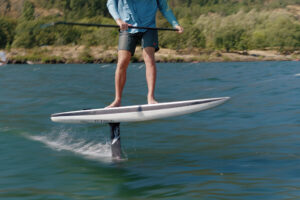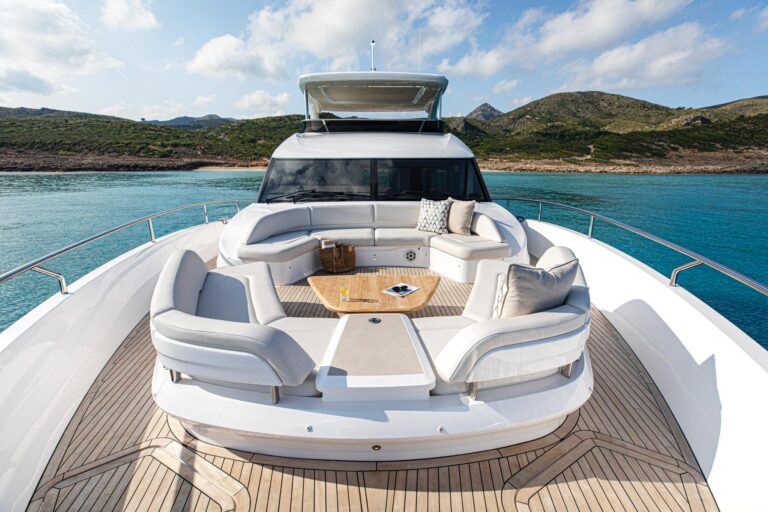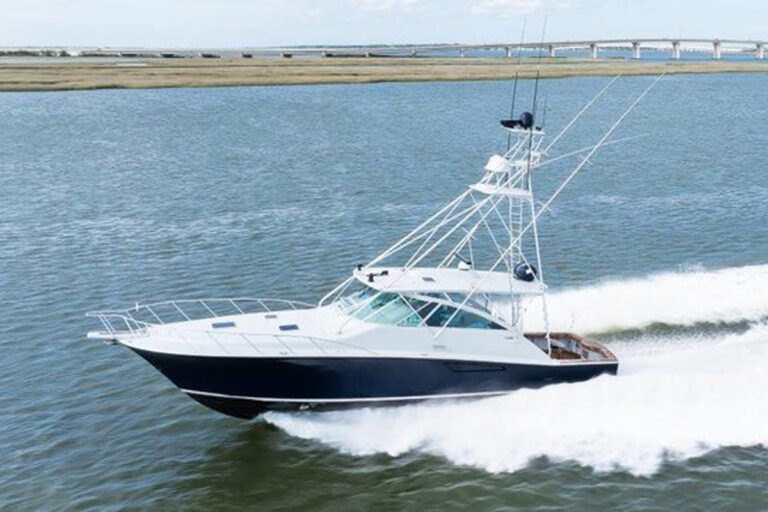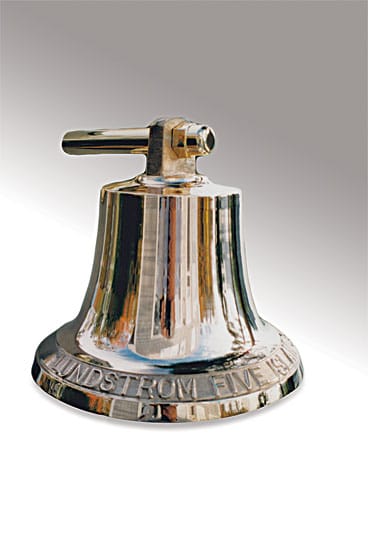
Scanmix Corp Bell
**
**
Ship’s Heart of Bronze
Four-hour watches on the old sailing ships were marked by the ringing of the ship’s bell on the hour and half-hour until eight bells signaled the changing of the watch. The Coast Guard still requires that vessels between 40 and 65 feet in length carry a bell that is audible from at least half a nautical mile away. Vestiges of regulation notwithstanding, bells are a beautiful way to evoke seafaring tradition on one’s own boat. Scanmix Corp. of Lewiston, Maine, still hand-casts bronze bells the old-fashioned way, and it can add your yacht’s name. Scanmix bells come in five sizes, ranging from 5½ inches in diameter and 2.9 pounds to 14 inches and 26.5 pounds. Prices of blank bells range from $289 to $1,950, with custom cast-in lettering extra. Scanmix Corp., 207-782-1885; www.bronzebells.com
_
_
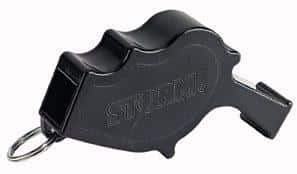
Whistle to Live By
If the day ever comes when you must find someone who’s gone overboard, let’s hope that person is wearing a life jacket and, better yet, that it has The Storm all-weather safety whistle attached. The Storm advantage is twofold. First, independent testing has shown that The Storm is louder than any other Coast Guard-approved survival whistle in its class, generating 118 decibels — loud enough to be heard at up to a half-mile away. Second, The Storm is designed to work while wet and even under water. Scuba diving clubs, for example, use it to signal during competitions, and it is the whistle of choice for U.S. Army Green Berets and other military outfits. Though it costs $7 or less, The Storm has snob appeal too. The Museum of Modern Art in New York included The Storm in its 2004 “Design Takes on Risk” exhibit. The Storm comes in orange, yellow and black. All-Weather Whistle Co., 314-436-3332; www.stormwhistles.com
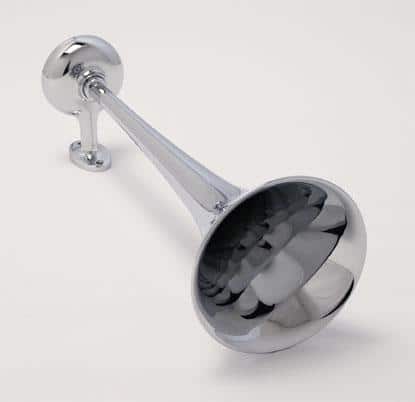
Toot Sweet
Kahlenberg Industries has been turning out marine air horns since 1930. The family-owned company is so in tune with the yachting community that it once made custom musical horns so a skipper could blast out his favorite songs at 140 decibels. The latest addition to the Kahlenberg line of air horns is the new single-trumpet S-330 ($457), designed to minimize air consumption and maximize sound pressure output. Like all Kahlenberg products the S-330 is manufactured in Two Rivers, Wisconsin, entirely of bronze, brass and titanium; it is finished in chrome plate, white powdercoat or custom colors. Light weight and small size — less than 19 inches — distinguish the S-330 compared with other horns of similar output. The S-330 is certified to IMO requirements for vessels up to 245 feet overall length and can be powered by extremely small compressed-air systems to reduce costs and save space. Kahlenberg, 920-793-4507; www.kahlenberg.com

Fire in the Hole
What would the Fourth of July be without a 13-gun salute from the deck of at least one boat in the harbor? The notion of “arming” recreational vessels with a miniature cannon has the blessing of the Herreshoffs themselves. L. Francis Herreshoff made 13 cannons as scale-model replicas of naval artillery pieces from the 18th and 19th centuries, with most of the originals accompanying yachts he designed. Back in 1967, Herreshoff authorized R. Berkeley George of Madison, Connecticut, to manufacture his cannon designs, and more than 600 were sold before George passed RBG Cannons to new owners in Smithfield, Rhode Island, two years ago. Yacht clubs typically fire a cannon to signal the start of a regatta or lowering of colors at dusk, but the maker’s website lists another 38, sometimes humorous, applications. RBG cannons are cast and machined in brass, bronze and iron with rare woods used in the carriage models. They fire either 10-gauge blank shells or black powder. Models start at around $1,500 with the 10-gauge Herreshoff signaling cannon, pictured here, priced at $2,595. _RBG Cannons, 800-327-2193; www.rbgcannons.com
_
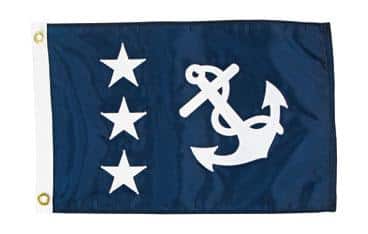
For Fights and Fancy Dress
“England expects that every man will do his duty,” surely the most famous flag message in history, was sent by Adm. Horatio Nelson as he was about to thrash the French fleet at the 1805 battle of Trafalgar. Even in today’s era of electronic communication, the Navy still uses flag hoists to convey information of local significance. The Navy and the civilian maritime community, particularly yacht clubs, also use the International Code of Signals flags decoratively. Yachts “dress ship” on national holidays, in regattas and on other special occasions. Punctilious commodores will see the rainbow of flags raised at precisely 0800 and lowered at “evening colors.” Flagstuff sells a complete line of nautical flags. They are U.S. made, using UV-resistant nylon with canvas headers. International Code of Signals flags come in several sizes and start at $400 a set. Flagstuff, 855-962-6249; www.flagstuff.com
“Gear” from our February 2012 issue.


